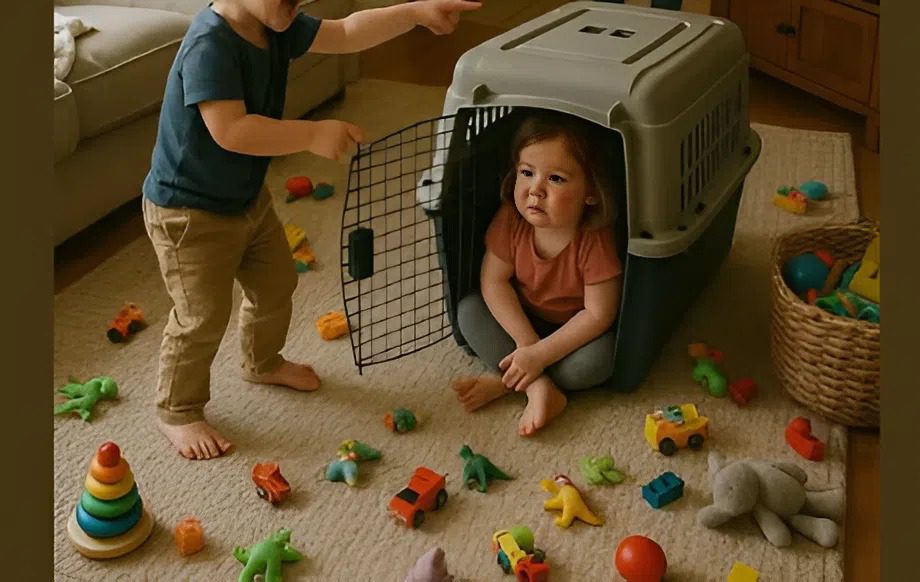The line between imaginative play and inappropriate treatment can be dangerously thin, as one mother recently discovered. Returning home early, she found her daughter locked inside the family’s dog crate while the babysitter looked on. The sitter, a student with early childhood education training, defended the action as a simple game of “zoo.” However, the child’s tear-streaked face and whispered confession—”I said I was done playing”—told a very different story. This was not play; it was a confinement that ignored the child’s distress and autonomy.
From a child safety perspective, this incident raises serious red flags. Confining a child in such a manner, especially against their will, is psychologically damaging and physically risky. A dog crate is not designed for human safety and can cause panic, claustrophobia, and injury. The babysitter’s casual indifference was perhaps more alarming than the act itself, demonstrating a fundamental lack of understanding about a child’s emotional needs and boundaries. True imaginative play is guided by joy and consent, not coercion and tears.
This story is a critical lesson for parents interviewing caregivers. It’s essential to discuss philosophies on discipline and play, and to look beyond qualifications for genuine warmth and judgment. Parents should trust their instincts; if something feels wrong, it likely is. The mother’s swift action to remove the babysitter was the correct response, prioritizing her child’s emotional well-being over convenience. It underscores the principle that a child’s sense of safety is paramount and should never be compromised for the sake of a “game.”


